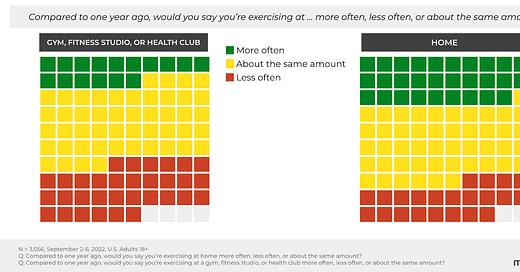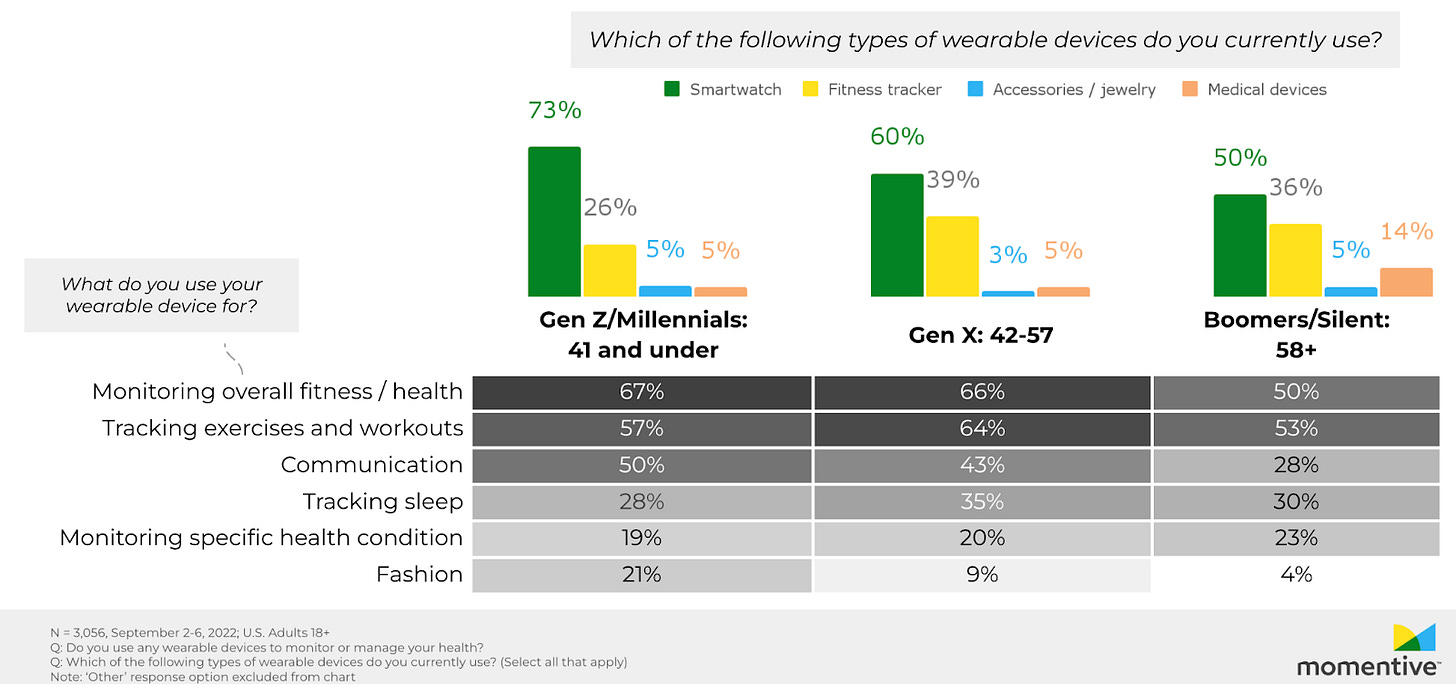Home fitness and digital wearables
Hello from SurveyMonkey!
In this week’s newsletter, Sam is back with an exclusive deep dive on how Americans are feeling about home fitness and wearables. But first, as always, here’s a quick recap of our data in the news and on our blog:
Get ready for TV’s biggest night: Find out who the public thinks will be the winners of this year’s Emmys awards, or use our survey templates to start planning the ultimate watch party.
Home fitness is more than a pandemic fad
Exercising at home shows signs of persisting past its boom during the height of COVID-19, with the majority of U.S. adults (57%) exercising at home on at least a weekly basis. Nearly three in 10 (29%) Americans say they are exercising at home more often compared with the previous year, out-pacing the percentage of those who are exercising at home less often. Gyms, however, have not fared as well: twice as many report going to the gym less often now compared with a year ago than those going more often (31% vs. 16%).
Three in ten U.S. adults use a wearable device as smartwatches gain in popularity
Smartwatches outpace fitness trackers, especially among younger consumers as wearable devices extend beyond monitoring health and tracking exercises. Among owners of wearable devices, smartwatches nearly outnumber fitness trackers 3 to 1 (73% vs 26%) among Gen Zers and Millennials, while the gap shrinks among older consumers (60% vs. 39% for Gen Xers and 50% vs. 36% for Boomers/Silent Generation). While health and fitness remain the leading reasons for wearable device ownership, usage of wearables as communication and fashion devices is higher among Gen Zers and Millennials owners.
Wearability and battery life are most important to consumers, while privacy and security take a back seat
Battery life and wearability lead all attributes as the most important factors in a wearable device (65% and 64%, respectively), ahead of cost (48%) and integration with services (41%). Data privacy (34%) and security (28%) are, for the most part, an afterthought, ranking alongside metrics (33%) and design (23%) .
Despite health tracking as the primary driver for wearable devices, owners show limited trust in the reliability of data from their devices: only 4 in 10 (42%) owners say they have a ‘great deal’ of trust that the data from their wearable devices is reliable. Half (50%) say they ‘somewhat’ trust the data produced. Data security also sees limited confidence: less than 1 in 3 (29%) show a ‘great deal’ of trust that the data from their wearable devices is secure, with most (49%) only ‘somewhat’ trusting.
That’s all for this week! Thanks as always for reading.







